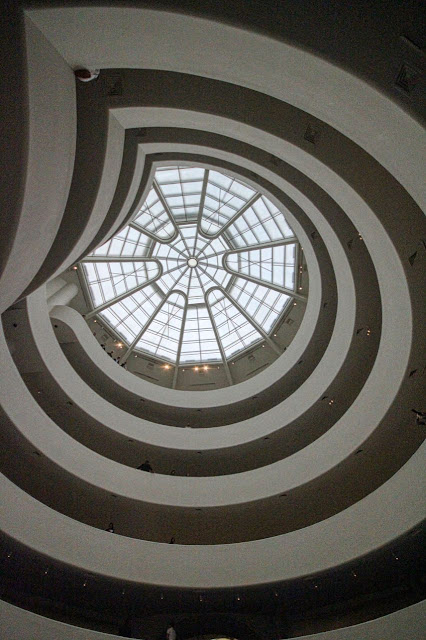A side effect from walking around New York City is tree deprivation. After a few hours of wandering among the concrete, steel, and glass, we missed the calming rustle and respite from trees. There's Central Park, but it's (ahem) Central and corralled. As it turns out, the best stroll through the city is along the High Line, a nearly 1.5-mile elevated former-railroad-now-park that weaves among and under the buildings of west Manhattan. Besides avoiding traffic and the rhythmic stopping and going of crosswalks, landscaping adorns the High Line. Trees!
Because of the High Line's popularity and proximity to the Hudson River, new starchitect-designed buildings are sprouting along the Line. We started our stroll at Hudson Yards near Hell's Kitchen. Hudson Yards has been controversial because of its high-end airs, its architecture, and, similar to people everywhere, the fact that it represents change. Unusual for private development, Hudson Yards has a large public area open to the Hudson River with an enormous, architectural sculpture named the Vessel. Even the Vessel, designed by Thomas Heatherwick and meant to evoke stepwells, is controversial due to its estimated cost of $200 million.
We tried to walk the Vessel, but it required tickets and a time reservation. Since this vacation was about wandering whims of the moment (we only had three scheduled events for the week: Hamilton, a house party at a Paul Rudolph townhouse, and a departure back to the airport), we couldn't commit.
The Vessel
Next to the Vessel was this kinda-cool building named The Shed with a rolling shade structure.
Looking back toward Hudson Yards and the Vessel:
The undulating curves of the Zaha Hadid Building hugs the Highline:
Unknown architect:
A block away from the Highline is a Frank Gehry, the IAC Building:
Going up behind the Gehry is a collection of twisting towers by Bjarke Ingels named The XI:
Also next door to the Gehry is a Jean Nouvel (100 Eleventh Avenue) that looks like a collection of window panes:
The High Ends (when walking south) at the Renzo Piano-designed Whitney Museum of American Art. Formerly housed in an iconic Marcel Breuer-designed building (post coming on that), the Whitney outgrew its Brutalist home and traded up to digs on the Line:













































































